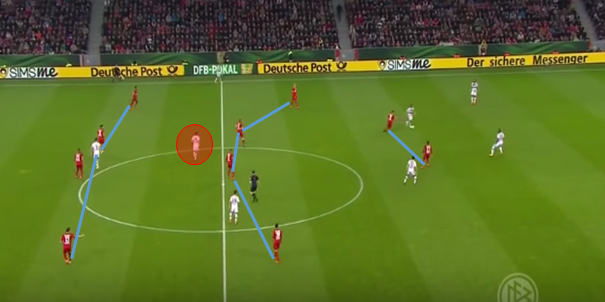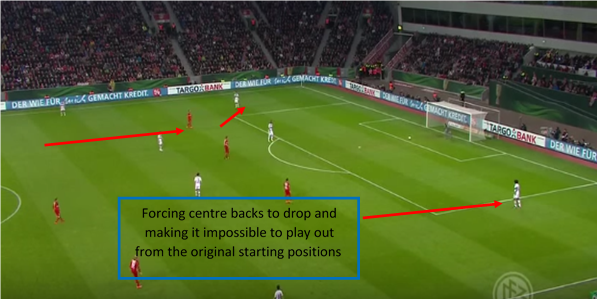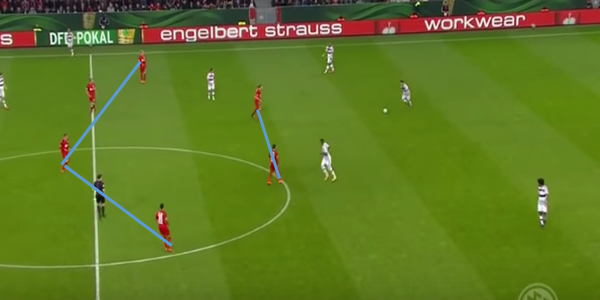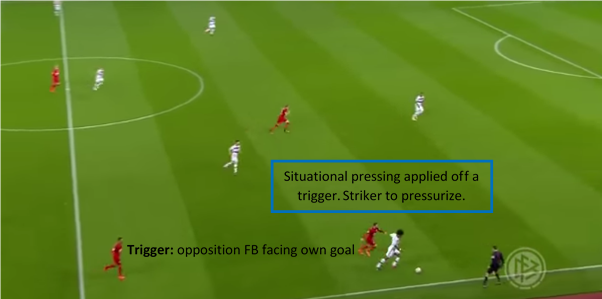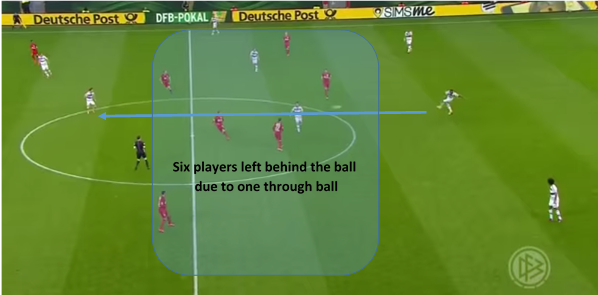By Alex Trukan
Playing with two strikers up front gives an opportunity out of possession to force the opposition into central areas of the pitch as well as wide. That gives a chance to adapt to the opposition more fluidly as well as to be more flexible when defending. Having a block of two units of 4 players in a line in behind two forwards is a simpliest way to get compact and narrow when out of possession and is an easiest defending strategy for players to understand. On the other hand, using flat lines poses a danger when defending against opposition playing in between the lines, for example offensive and defensive midfielders.
Team shape – playing 1-4-4-2
The team is playing with three flat lines: 4 defenders, 4 midfielders and 2 strikers. The main strength of this formation when out of possession lies in the ability to force playing direction (two strikers) as well as counter-attack (usually having to players in front of the ball). The biggest threat are the opposition players positioned between the lines.
Defending when GK in possession
When the opposition goalkeeper has the ball, one of the options is to switch to the front three what will make it even harder for defenders to play out from the back. Front three is positioned narrowly, what forces opposition centre backs to drop into spaces next to the penalty box or play long.
Defending when centre backs in possession
If the opposition manages to play out short from the goalkeeper into centre backs or the team is not organised into front three, one of the options is to drop and apply an engagement line on the 2/3s of the pitch with two strikers playing up front and forcing outside/inside.
The pressing would be only applied off triggers. That should be agreed before the match with the team (strikers/central defenders especially). One of the triggers might be to press when opposition player receives the ball on his own half facing an own goal. Another one might be applied when the pass is misplaced/played too hard/too slow. Depending on the area of the pitch the first player to press might be a striker (if centre backs in possession) or left/right midfielders (if full backs in possession).
Pressing can also have an aim to direct the opposition into certain areas of the field or force a mistake. In this case, the team is trying to force inside where they have an overload. The primary player is a winger who pressurizes showing inside (body position sideways on).
The biggest danger for the team defending from the front in a flat 1-4-4-2 formation is a through ball breaking the lines. If the pass goes through the gaps in between the players, it means the whole unit is behind the ball, leaving the players in a disadvantageous, recovering position.
[wpsharely id="2988"][/wpsharely]That is why, keeping close distances to each other horizontally as well as making the spaces between units shorter is crucial. In order to prevent the threat of players in between the lines, it is worth considering man to man marking in certain areas of the pitch and for certain players. Tracking runners (strikers/midfielders) coming deep is important to prevent receiving and turning.
By Alex Trukan, Development Coach, Nottingham Forest
@AlexTrukan

